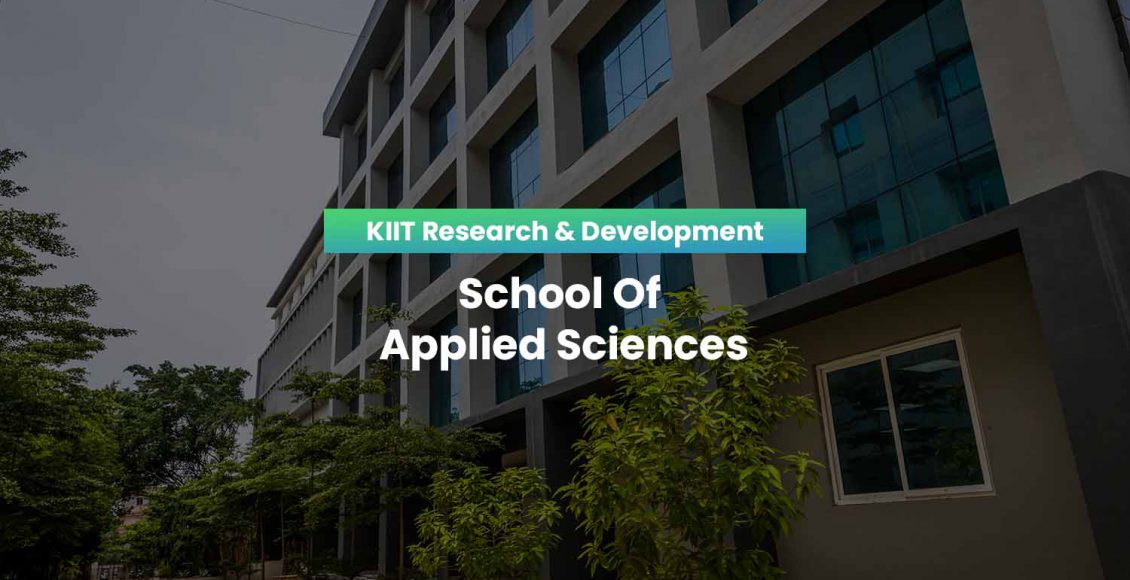School of Applied Sciences (Apr – May 2022)
Ph.D. Degree Awarded (Provisional):
Student’s Name: Dr. Muralidhar Swain
Supervisor’s Name: Dr. Sushant Kumar Sahoo, School of Applied Sciences, KIIT & Dr.Bijaya Kumar Sahoo, NIT Raipur
Thesis Title: Pyroelectricity and Thermal Properties of III-V Nitride Heterostructures

Abstract:
III-V nitride semiconductors (AlN, GaN and InN) are suitable candidates in optoelectronics world due to wide (Eg,AlN = 6.2eV, Eg,GaN = 3.4eV, Eg,InN = 0.64eV) and direct band gaps. One of the most important and peculiar properties of this material system is Built-in-Polarization field. Due to non-centrosymmetric structure of the unit cells, these materials are originally polarized, which is called spontaneous polarization. During the growth of these materials over a substrate, due to lattice mismatch, external stressand thermal strain, againpolarization builds inside these materials enhancing its strength,which is known as piezoelectric polarization.In this work, pyroelectric effect has been investigated by studying the effect of Built-in-Polarizationfield on the thermal conductivity of GaN, AlN and InN and their heterostructures like InxGa1-xN/GaN,AlxGa1−xN/GaN.
Journal
1. Acharya S and Misra R. (2022) , Hypoxia Responsive Phytonanotheranostics: A Novel Paradigm towards Fighting Cancer, Nanomedicine: Nanotechnology, Biology and Medicine, vol. 42, p.102549, DOI: 10.1016/j.nano.2022.102549 (IF: 6.458).
Abstract
Hypoxia enhances tumor aggressiveness, thereby reducing the efficacy of anticancer therapies. Phytomedicine, which is nowadays considered as the new panacea owing to its dynamic physiological properties, is often plagued by shortcomings. Incorporating these wonder drugs in nanoparticles (phytonanomedicine) for hypoxia therapy is a new prospect in the direction of cancer management. Similarly, the concept of phytonanotheranostics for the precise tumor lesion detection and treatment monitoring in the hypoxic scenario is going on a rampant speed. In the same line, smart nanoparticles which step in for “on-demand” drug release based on internal or external stimuli are also being explored as a new tool for cancer management. However, studies regarding these smart and tailor-made nanotheranostics in the hypoxic tumor microenvironment are very limited. The present review is an attempt to collate these smart stimuli-responsive phytonanotherapeutics in one place for initiating future research in this upcoming field for better cancer treatment.
2. A. Singha, S. Praharaj, S. K. Rout, and D. Rout (2022), Composition dependent crossover from ferroelectric to relaxor-ferroelectric in NBT-ST-KNN ceramics. Current Applied Physics, Vol. 36, pp.160-170. DOI: https://doi.org/10.1016/j.cap.2022.02.002(IF: 2.48).
Abstract
Composition-driven crossover from ferroelectric (FE) to relaxor-ferroelectric (RFE) is systematically investigated in (0.8-x)(Na0.5Bi0.5)TiO3-0.2SrTiO3–x(K0.5Na0.5)NbO3 (NBT-ST-xKNN) ceramics in the light of ferroelectric and dielectric (e) response. The appearance of constricted polarization-electric field loop and double current density-electric field peaks in the proximity of x = 0.02 suggest a co-existence of FE and RFE phases. The system attains a maximume ~ 4200 and tan δ <0.1 at x = 0.02. Broad e(T) peaks reveal a greater degree of disorder due to KNN substitution and their deconvolution demonstrates three different relaxation/polarization processes related to low and high-temperature nanodomains. The composition with x = 0.1 exhibits maximum broadness in e(T) profiles resulting in a temperature-insensitive permittivity variation of ±15% (ε125 °C,100 kHz~2007) over a span of ~ 280 °C. A remarkably low (TCε)100kHz of 75 ppm/°C is also achieved for x = 0.1 from 100–300°C proposing it to be a potential capacitor material.
Conference
1. Mahato, R., Das, M., Nandkeolyar, R., and Mahala, B. K.2022, Inclined Magnetic Field and Nonlinear Thermal Radiation Effects on Nanofluids Flow with Homogeneous-Heterogeneous Reactions,InAIP Conference Proceedings, FIAM, NIT, Jamshedpur, India, Vol. 2435, No.1, p.020009,, AIP Publishing LLC, https://doi.org/10.1063/5.0083593.
Abstract:
The present article analyzes the stagnation point boundary layer flow of nanofluids towards a stretching sheet in a porous media using similarity transformations. We study the impact of nonlinear thermal radiation, inclined magnetic field, homogeneous and heterogeneous reactions, viscous dissipation and heat generation in Ag-water and Cu-water nanofluids. The numerical solutions with the corresponding boundary conditions are obtained by adopting bvp4c program in Matlab. Influence of physical parameters on fluid flow behavior are exhibited via graphs. Local Nusselt number and local skin friction coefficient data are exhibited through table. Nanofluid velocity reduces with increasing magnetic parameter and inclination angle.
2. Sen S. S., Das, M., and Nandkeolyar, R.2022, Effect of Non-Linear Radiation on Catalytic MHD Flow of ND-Co3O4/EG Hybrid Nanofluid with Slip Conditions, In AIP Conference Proceedings,FIAM, NIT, Jamshedpur, India, Vol.2435, No.1, p.020024,. AIP Publishing LLC, https://doi.org/10.1063/5.0083594.
Abstract:
The work studies the mixed convection flow of hybrid nanofluid through a permeable cylinder. The problem is designed to study the effects of magnetic field, homogeneous-heterogeneous reaction, non-linear thermal radiation and slip condition on the flow field. The governing equations are formed according to the assumptions and the respective boundary conditions are defined. The equations along with their boundary conditions and the physical quantities are transformed into non-dimensional forms by using the respective similarity transformations. The numerical solutions of the model are obtained using the BVP4C solver in MATLAB and the results are discussed through graphs and tables.
Book Chapter
Mohanty, C, Vinod, C.H., Acharya, S,, and Mahapatra, N. (2022), COVID-19 Drug Repositioning: Present Status and Prospects, In Modeling, Control and Drug Development for COVID-19 Outbreak Prevention, Part of the Studies in Systems, Decision and Control book series (SSDC,volume 366), Springer, pp. 645–671.
Abstract
SARS-CoV-2causing the COVID-19 disease has gained the status of a pandemic worldwide. Till now no appropriate drug has been identified which can become the gold standard for coronavirus-2. Given the pressing need to quickly find effectual medications for COVID-19, existing drugs are being repositioned. The term “repositioning” or “repurposing” refers to the use of approved drugs originally used against other pathogens which can also be used against SARS-CoV-2. These therapeutics can be chosen from a wide spectrum of drugs used for cancer-induced inflammation, immune dysfunction, and coagulopathy. The main idea behind the repositioning of the drug is to lessen the time and expenditure which is done to find a new drug and then ushering its transition from bench to bedside. For narrowing down the search as to which therapeutics can be considered for repositioning, Artificial Intelligence (AI) can be of great aid. The present book chapter comprehensively highlights all these points.


